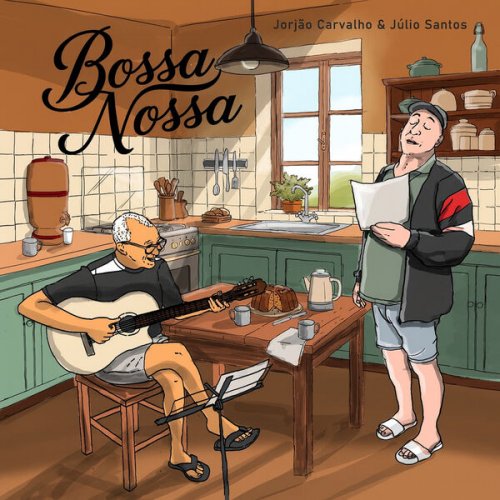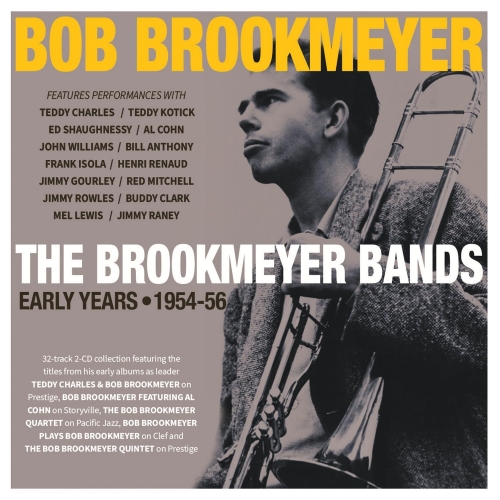Artist:
Angelo Baselli, Gianluca Casadei
Title:
Fun a Velt Vos iz Nishto Mer, Of a World That Is No More: Klezmer treasures from Vernadsky National Library of Ukraine
Year Of Release:
2025
Label:
Da Vinci Classics
Genre:
Classical
Quality:
FLAC (tracks)
Total Time: 58:17
Total Size: 300 MB
WebSite:
Album Preview
Tracklist:1. Angelo Baselli & Gianluca Casadei – Nign un Freylekhs (04:48)
2. Angelo Baselli & Gianluca Casadei – Soboloevski suite (06:55)
3. Angelo Baselli & Gianluca Casadei – Mazurka (02:35)
4. Angelo Baselli & Gianluca Casadei – Ange 977 (02:55)
5. Angelo Baselli & Gianluca Casadei – A Yidishe Kozatshke (03:05)
6. Angelo Baselli & Gianluca Casadei – Terk à "La Juive" (05:12)
7. Angelo Baselli & Gianluca Casadei – Hasidish Nign (05:19)
8. Angelo Baselli & Gianluca Casadei – Kale Bazetsns (02:39)
9. Angelo Baselli & Gianluca Casadei – Zhok (01:33)
10. Angelo Baselli & Gianluca Casadei – Marsh tsu der Khupe (03:35)
11. Angelo Baselli & Gianluca Casadei – Zayt-zhe mir gezunt, mayne tayere eltern/Gasn Shtikl (05:12)
12. Angelo Baselli & Gianluca Casadei – Freylekhs - Bolgaril (03:34)
13. Angelo Baselli & Gianluca Casadei – A gute nakht (01:51)
14. Angelo Baselli & Gianluca Casadei – Yidisher Tants (04:34)
15. Angelo Baselli & Gianluca Casadei – Dobranotsh (04:24)
A world that is no more—Fun a velt vos iz nishto mer in Yiddish—is the title of a memoir by the Polish writer Israel Joshua Singer. With characteristically Jewish irony, the author recounts his childhood in the shtetl of Leoncin, a remote village in the Polish countryside at the dawn of the twentieth century, where his father had been appointed rabbi. Of that world, Singer ‘gives us a narrative so vivid that we seem to hear its voices and catch its scents,’ writes the Italian translator Anna Linda Callow (La Pecora Nera, Adelphi 2022). Among the surviving echoes of that vanished universe, klezmer music stands as one of its most significant artistic expressions, its roots sunk deep in centuries of history and cultural interchange in Eastern Europe.
The word klezmer derives from the Hebrew kli zemer (כלי זמר), literally ‘instrument of song’. It first referred to the instruments themselves, then to the musicians who played them—the klezmorim—and, only from the second half of the last century, to the musical genre as such.
Geographically, klezmer flourished chiefly in the so-called Pale of Settlement, a vast region of the Russian Empire where most Jews were compelled to live; it encompassed areas of what are now Ukraine, Belarus, Poland, Lithuania and Moldova. There, the shtetlakh—the characteristic Jewish villages—and the larger urban communities formed the beating heart of an autonomous Jewish culture, and klezmer became its essential soundtrack, present in every sphere of communal life.
Klezmer styles and repertory are highly varied, reflecting the influence of manifold traditions encountered by the Jews: synagogue chant, Slavic and Romani folk music, hasidic tunes and local dances. In a celebrated article, the musician-scholar Walter Zev Feldman classified the klezmorim’ repertory into four broad categories, according to origin and function. Freylekhs, Khosidl, Skotchne and Sher form the oldest, most characteristically Jewish “Core Repertoire”. Doina, Sirba and Bulgarish were originally Moldavian or Romani pieces that the klezmorim adopted and adapted (“Transitional Repertoire”). A third group comprised pieces from the various regions in which the musicians worked, performed for both Jewish and non-Jewish audiences—for example, the Ukrainian Kolomeika and Kozachok. Finally, a wider “Cosmopolitan Repertoire” contained dances fashionable throughout Europe: Quadrilles, Pas d’Espagne, Polkas and Waltzes.
From the An-Ski Ethnographic Expedition to the KMDMP
An awareness of the fragility of popular cultures, and of the very real danger that Ashkenazi Jewish heritage might be lost, was the driving force behind the monumental ethnographic expedition led by Shlomo Zanvil Rapoport—better known by the pseudonym An-ski—between 1912 and 1914 in the Pale of Settlement. A polymath—writer, activist, intellectual—An-ski perceived how rapidly assimilation, secularisation and mounting political tension (including pogroms and the threat of war) were eroding traditional Jewish life. His aim was to document and preserve every aspect of collective memory—oral stories, songs, ritual objects, music—before this precious cultural mosaic disappeared.
Methodologically, the expedition was far ahead of its time. The team included photographers, who provided visual documentation; phonograph operators, who made wax-cylinder recordings; and specialists devoted to particular fields, such as music. Foremost among these was Zinovy Kiselgof (1878–1939), an outstanding ethnomusicologist whose painstaking collection and transcription of Jewish melodies would prove invaluable. Kiselgof not only recorded the music but also meticulously noted the circumstances of performance, variants and ritual contexts—information that is now a gold-mine for ethnomusicology.
In scarcely three years, An-ski’s team visited more than seventy Jewish communities in historic Volhynia and Podolia (today divided among Ukraine, Belarus and Poland), amassing a remarkable corpus: over 2,000 ritual and folk objects, some 500 photographs of daily life and human types in the shtetlakh, more than 1,800 textual documents, and hundreds of songs and melodies. Their direct interaction with rabbis, peasants, artisans, musicians and elders ensured a participatory approach that went beyond mere observation to capture the depth of cultural experience. Each shtetl was treated as a unique microcosm whose preservation was vital to understanding the broader Jewish world.
The enterprise, alas, was a race against time. When the First World War broke out in 1914, the expedition was abruptly curtailed. War, revolution and subsequent devastation scattered, damaged or destroyed part of the collection. Happily, a significant portion survived, including Kiselgof’s priceless musical manuscripts, which now form the core of the Kiselgof-Makonovetsky Digital Manuscript Project (KMDMP).
Founded in 2017 through a partnership between Tokyo University of the Arts and the Klezmer Institute of New York, the KMDMP seeks to make previously unpublished manuscripts widely accessible. The collection has two principal components: first, the material gathered by Kiselgof himself; second, the handwritten anthology of wedding pieces compiled by the violinist-researcher Avraham-Yehoshua Makonovetsky (1879–1941), preserved together with Kiselgof’s papers in the Manuscripts Section of the Vernadsky National Library of Ukraine, Kyiv. Rich in technical annotations and liturgical instructions, these manuscripts are far more than scores: they are living documents of klezmorim performance practice, allowing us to hear once more the voices and sounds of a world that is no more.










![Wadada Leo Smith - Divine Love (1979/2025) [Hi-Res] Wadada Leo Smith - Divine Love (1979/2025) [Hi-Res]](https://www.dibpic.com/uploads/posts/2025-12/1765802240_cover.jpg)